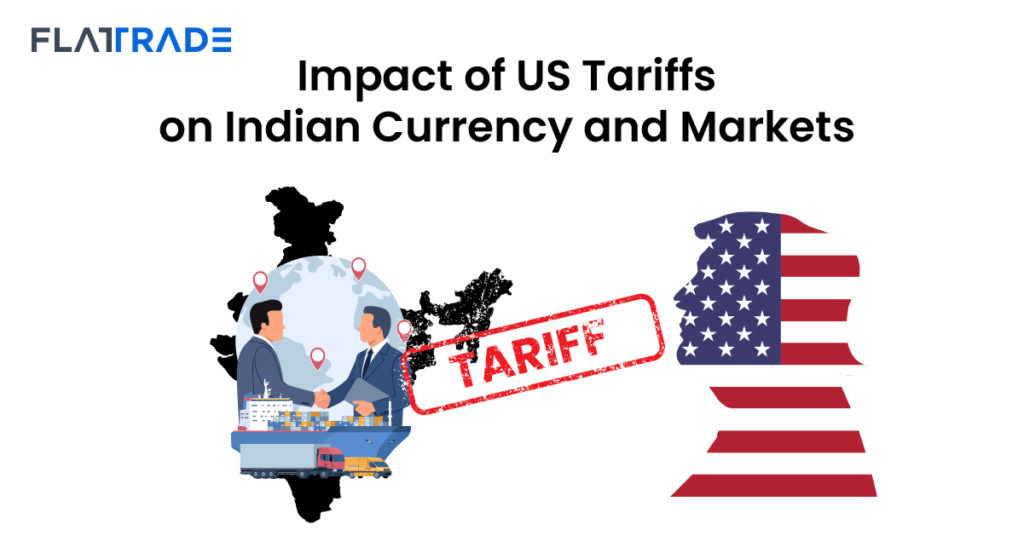Impact on INR
The US trade tariffs had a major impact on the Indian currency. Despite the constant changes, the Indian Rupee has shown a stable performance. On April 7, the rupee closed at 85.8350 per U.S. dollar, down 0.7% on the day, its worst single-day fall since January 13. But when looking at the past five-day record, the rupee is in a better position. The extent of risk aversion will make sure the up-move on dollar/rupee at open will be sustained and will likely build. Two days after the trade tariffs came into effect, on April 4, the Indian rupee hit a record low of 87.28 on Monday, following US President Donald Trump’s announcement of tariffs on imports from major trade partners that has sparked fears of a trade war. The value rupee was likely to drop further but was stopped by the intervention of RBI through public sector banks. Dealers speculate that RBI is letting the rupee adjust in line with other Asian currencies. However, currently, the US dollar has been facing challenges, which reflect as a positive to emerging economies like India.

Impact on Indian Market
The US has imposed a flat 26% tariff on all goods being exported by India to the US, while other countries are experiencing tariffs between 10 to 49 percent. U.S. has levied a 34% reciprocal tax on China, Japan’s exports to U.S. will attract 24%, Thailand 36%, Bangladesh 37%, Malaysia 24%, Taiwan at 32%, South Korea at 25% and Vietnam will attract 46% – one of the highest. India’s export competitiveness would be less impacted than key rivals due to its position in the middle of the tariff rates.
The Indian stock market was also hit hard due to the imposition of trade tariffs. April 7 turned out to be a black Monday for the Indian stock market. This incident has left investors’ money by ₹14 lakh crore as the market capitalization of all companies listed on the BSE dropped to ₹389.25 lakh crore from ₹403.34 lakh crore in the previous trading session on Friday.
Impact on Automobile Sector
The later US trade tariff will not have any significant impact on the Indian auto sector. The new tariff will be applicable only to passenger vehicles, not to the automobile sector. The automobile sector is already subject to Section 232 tariffs at 25 percent. India’s passenger vehicle export is very little, due to this the automobile sector is not higly affected.
Impact on Heavyweight stocks
Heavyweight stocks like Relienece inustries, Tata Consultancy Service, HDFC Bank and L&T contributed heavily towards the downfall of the stock market. These stocks hold a lot of weight index, so a decline in these stocks has heavily impacted the market. Shares of Reliance Industries have reduced around 4.5 percent, the stocks of TCS fell over 6 percent in the past week, the stocks of HDFC Bank decreased 0.82 percent, and the stocks of L&T fell over 7 percent respectively over the past week.
Conclusion
The main reason for the declined market performance in India is due to India’s growing concern about the global trade war. However, India is planning to work towards a balance and equitable trade with the US.The
Indian External Affairs Minister and the US Secretary of State held a call on April 7 and discussed the need to speed up the India-US Bilateral Trade Agreement (BTA). The Commerce Ministry has stated that they are studying the tariffs carefully. Getting past this situation will require a lot of strategic planning and cooperation from the governments and businesses of both countries to ensure a better and stable economy.
Source – Reuters
Disclaimer: Investments in the Securities market and Mutual Funds are subject to market risks. Read all the related documents carefully before investing | The securities are quoted as an example and not as a recommendation | Brokerage will not exceed the SEBI-prescribed limit | Margins will be collected as per the exchange norms.





